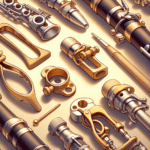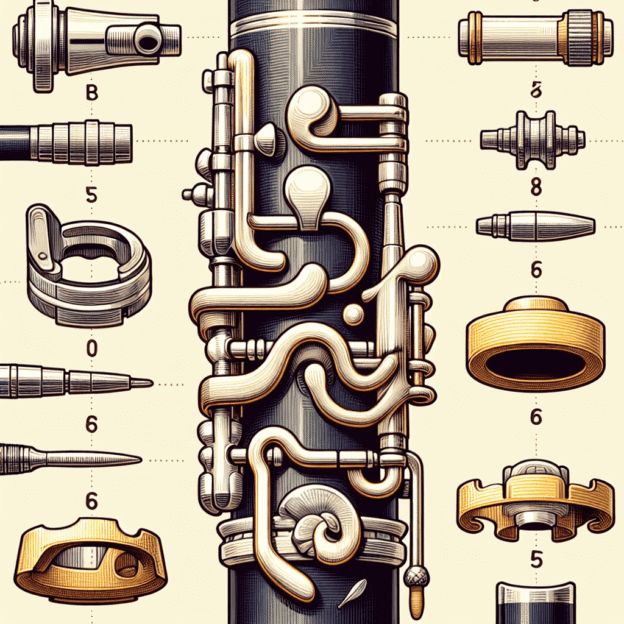The clarinet ligature might be tiny, but it packs a punch in shaping your sound. It holds the reed to the mouthpiece, and its design can really change how you play. Let's dive into what makes a ligature tick and how it can boost your performance.
Understanding Ligature Design
Ligatures come in all shapes and sizes, but they all do the same job: keeping the reed in place while letting it vibrate. Here are some key design elements:
- Materials: Ligatures can be made from metal, leather, or fabric. Metal ones are tough and give a bright sound, while leather and fabric offer a warmer tone and more flexibility.
- Shape and Fit: The shape and fit affect how the reed vibrates. Some are cylindrical, others conical. The fit should be snug but not too tight, allowing the reed to resonate.
- Tightening Mechanism: Different ligatures use different ways to tighten. Some have one screw, others two for finer adjustments. There are also sliding mechanisms and bands.
Impact on Sound and Playability
The ligature you choose can change your sound and how easy it is to play. Consider these factors:
| Factor | Description |
|---|---|
| Response | A good ligature helps you play quickly and accurately. |
| Tone | Metal ligatures give a brighter sound, while leather or fabric ones offer a warmer tone. |
| Ease of Play | The right ligature makes playing easier, reducing effort and enhancing comfort, especially during long sessions. |
Choosing the Right Ligature
Picking the right ligature depends on your style, the music you play, and your preferences. Here are some tips:
- Experiment with Materials: Try different materials to find the one that suits your sound. Metal, leather, and synthetic ligatures each have unique traits.
- Check the Fit: Make sure the ligature fits your mouthpiece and reed well. A bad fit can hurt your performance and damage the reed.
- Consider Your Playing Environment: Think about where you play. Metal ligatures might be better for jazz or outdoor gigs, while leather or fabric could be ideal for classical or chamber music.
Caring for Your Ligature
To keep your ligature in top shape, follow these care tips:
- Regular Cleaning: Clean your ligature often to remove moisture and buildup. Use a soft cloth and mild cleaner for metal, and follow the manufacturer's instructions for leather or fabric.
- Proper Storage: Store your ligature in a protective case when not in use to prevent damage.
- Avoid Over-tightening: Don't over-tighten the ligature. It should be snug but not too tight, to avoid damaging the ligature and reed.
Experimenting with Ligatures
Trying different ligatures can be eye-opening. Here are some things to experiment with:
- Material Differences: Notice how metal, leather, and fabric ligatures change your sound. Pay attention to brightness, warmth, and overall character.
- Design Variations: Test different designs, like single-screw versus double-screw, or unique tightening mechanisms. See how they affect your comfort and control.
- Brand Comparisons: Compare ligatures from different brands to understand how various designs impact performance.
Insights from the Martin Freres Tradition
Martin Freres Clarinets are known for their craftsmanship. Their approach to ligature design emphasizes precision, quality materials, and ergonomic design, reflecting a deep understanding of what clarinetists need.
Practical Tips for Clarinetists
Here are some practical tips to get the most out of your ligature:
- Seek Professional Advice: If you're unsure which ligature to choose, ask your clarinet teacher or a professional. They can offer valuable insights based on their experience.
- Try Before You Buy: Whenever possible, try out different ligatures to see which one feels and sounds best. Many music stores offer trial periods or rentals.
- Be Patient: Finding the perfect ligature takes time. Keep experimenting until you find the one that enhances your playing the most.
In the world of clarinets, the ligature is more than just a small piece of hardware—it's a key to unlocking the instrument's full potential. By understanding its nuances and investing in quality craftsmanship, you can elevate your playing experience and discover new levels of musical expression.







